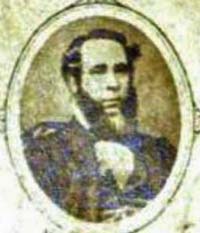Wilson Armistead facts for kids
Quick facts for kids
Wilson Armistead
|
|
|---|---|
 |
|
| Born | 30 August 1819 |
| Died | 18 February 1868 |
| Occupation | Flax and mustard manufacturer; abolitionist |
| Subject | Abolition |
| Notable works | A Tribute for the Negro |
Wilson Armistead (born August 30, 1819 – died February 18, 1868) was a Quaker businessman and writer from Leeds, England. He was a strong supporter of the movement to end slavery, known as abolitionism. He led the Leeds Anti-Slavery Association and wrote many books against slavery. His most famous book, A Tribute for the Negro, was published in 1848. In 1851, he bravely hosted Ellen and William Craft, who were formerly enslaved people, and even listed them as 'fugitive slaves' on the official census.
Contents
Wilson Armistead: A Champion Against Slavery
His Early Life in Leeds
Wilson Armistead was born in Leeds, England, on August 30, 1819. His parents were Joseph and Hannah Armistead. He grew up in Holbeck, where his family ran a business making flax and mustard. Their family were Quakers, a religious group known for their peaceful beliefs and strong opposition to slavery.
In 1844, Wilson Armistead married Mary Bragg. Their first child, Joseph John, was born in 1846. They went on to have four more children, two sons and two daughters.
Fighting Against Slavery
By the 1840s, Wilson Armistead was actively involved in his family's business. At the same time, he became more and more involved in the movement to end slavery. He was a member of the Leeds Library, a special library that helped him connect with other people who shared his ideas.
In 1853, the Leeds Anti-Slavery Association was started. Wilson Armistead became its president, and his wife, Mary, became the librarian. Five years before this, in 1848, Armistead published his most important book, A Tribute for the Negro. This book is still used today to teach about the end of slavery.
Helping Enslaved People Escape
In June 1850, Armistead visited the United States. There, he met important abolitionists like William Lloyd Garrison. He also met Ellen and William Craft, who had bravely escaped slavery in Macon, Georgia in 1848.
Soon after, the Crafts had to escape again, this time to England. This was because the Fugitive Slave Act of 1850 was passed in September 1850. This law made it easier for enslavers to capture people who had escaped slavery, even in free states.
In 1851, when the official census was taken, Wilson and Mary Armistead welcomed the Crafts into their home. Wilson Armistead did something very brave. He wrote "fugitive slaves" next to their names on the census form. This was a public act of protest against slavery, and it was widely reported in the newspapers.
His Important Books
Besides A Tribute for the Negro, Wilson Armistead wrote other books. In 1854, he published God’s Image in Ebony. He also edited a collection of writings against slavery called 500,000 Strokes For Freedom in 1853. Later, in 1867, he published a book about the life of Anthony Benezet, another Quaker abolitionist.
Armistead also wrote about other topics. For example, he wrote Tales and Legends of the English Lakes and Mountains.
William Wells Brown, a famous African-American abolitionist, praised Armistead's work. He said that "Few English gentlemen have done more to hasten the day of the slave’s liberation than Wilson Armistead." This shows how important Armistead was in the fight to end slavery.
Images for kids
-
Title page from A Tribute for the Negro by William Armistead, published in 1848


